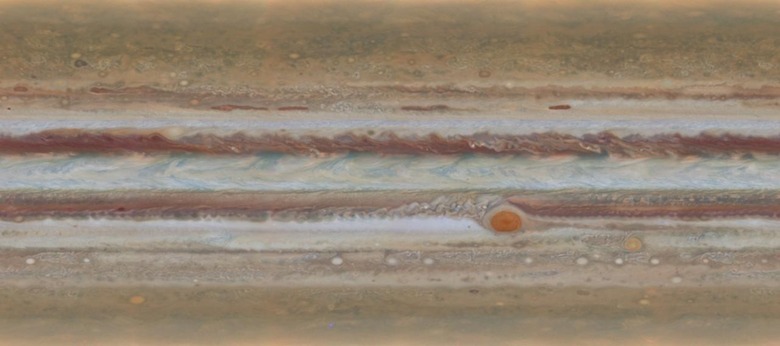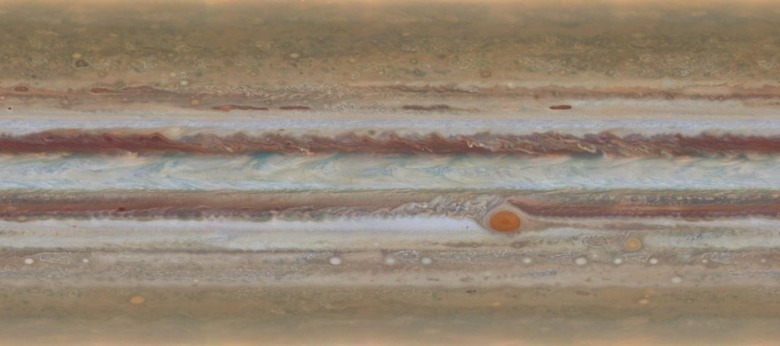Jupiter Spinning: NASA Shares 4K Video And Map Photos
NASA's Goddard Space Flight Center have shared a set of images captured with the Hubble space telescope's high-performance Wide Field Camera 3 of the planet Jupiter. These images confirm what's been suspected of the Great Red Spot on Jupiter for many years – it's shrinking. Not only is the now-more-orange-than-red spot shrinking, it's becoming more circular than it's been in the past. According to NASA, the long axis of the spot is now 150 miles (240 kilometers) shorter now than it was in 2014.
Winds in the shrinking storm of the red spot are whipping at 330 miles per hour (150 meters per second) or greater. The color of the spot is becoming gradually less red, moving into orange tones. While the spot isn't shrinking any faster on the long-term than it has been since NASA started tracking it, it is getting smaller faster than it was a year ago.
Above you'll observe a collection of photos combined to make a video shared by NASA in glorious 4K Ultra HD.
This is all the result of a program being run by NASA that'll continue to study our solar system's outer planets using the Hubble space telescope. NASA suggests that the observations are designed to capture "a broad range of features, including winds, clouds, storms and atmospheric chemistry."
A set of two 4K-sized photos can be found above and below. These two maps provide full images of the planet Jupiter as captured by Hubble this year.
Tap either of the images above to view full-sized versions. Again, these are full-scale maps of the planet Jupiter, and wouldn't at all be out of place on your smart device's home screen as a wallpaper.
The video you're seeing below alternates between the two images, showing the motion of the clouds around the red spot and inside the red spot.
The colorful photo you're seeing here is being shown in false colors, depicting Jupiter's North Equatorial Belt. There, NASA has spotted a wave that's only ever appeared in our scopes once before. NASA suggests that the wave is "similar to a wave that sometimes occurs in Earth's atmosphere when cyclones are forming."
Stay tuned as this Hubble-based set of observations continues well through the future. Keep your eyes on the prize with our Science tag portal.


